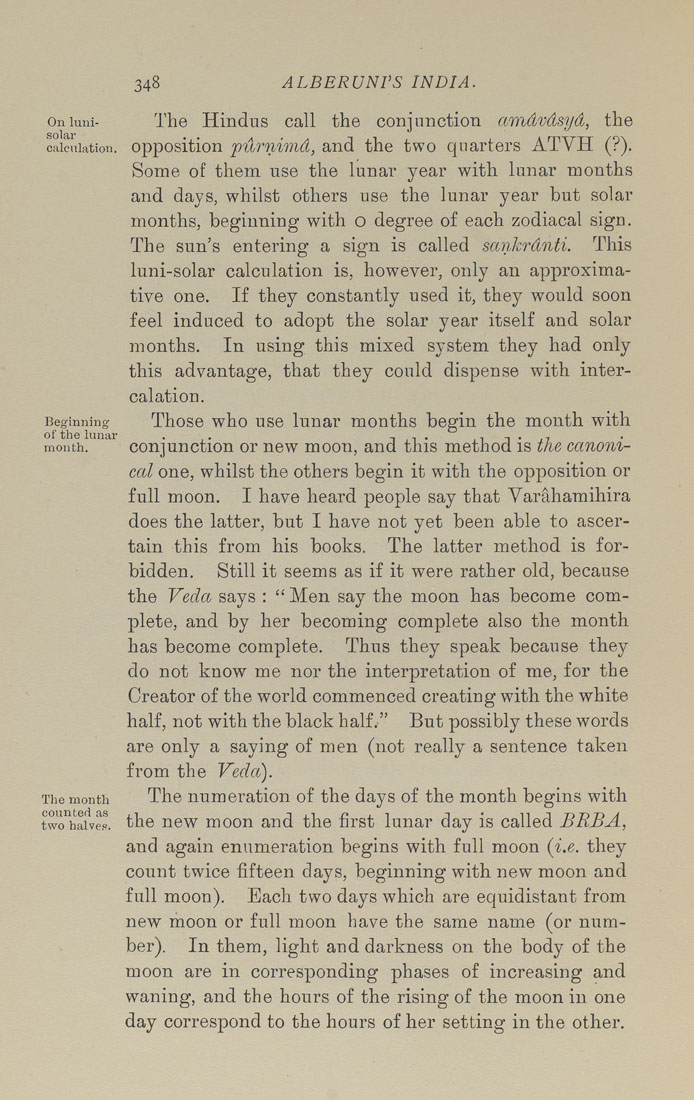Bīrūnī, Muḥammad ibn Aḥmad, Alberuni's India (v. 1)
(London : Kegan Paul, Trench, Trübner & Co., 1910.)
|
||
|
|
|
|
| Page 348 |

348 ALBERUNPS INDIA. Oniuni- The Hindus call the conjunction amdvdsyd, the calculation, opposition puruimd, and the two quarters ATVH (?). Some of them use the lunar year with lunar mouths and days, whilst others use the lunar year but solar months, beginning with o degree of each zodiacal sign. The sun's entering a sign is called sankrdnti. This luni-solar calculation is, however, only an approxima¬ tive one. If they constantly used it, they would soon feel induced to adopt the solar year itself and solar months. In using this mixed system they had only this advantage, that they could dispense with inter¬ calation. Beginning Thoso who usc lunar months begin the month with month. conjunction or new moon, and this method is the canoni¬ cal one, whilst the others begin it with the opposition or full moon. I have heard people say that Varahamihira does the latter, but I have not yet been able to ascer¬ tain this from his books. The latter method is for¬ bidden. Still it seems as if it were rather old, because the Veda says : " Men say the moon has become com¬ plete, and by her becoming complete also the month has become complete. Thus they speak because they do not know me nor the interpretation of me, for the Creator of the world commenced creating with the white half, not with the black half." But possibly these words are only a saying of men (not really a sentence taken from the Veda). The month The numeration of the days of the month begins with two'haives. the ucw moon and the first lunar day is called BRBA, and again enumeration begins with full moon (i.e. they count twice fifteen days, beginning with new moon and full moon). Each two days which are equidistant from new moon or full moon have the same name (or num¬ ber). In them, light and darkness on the body of the moon are in corresponding phases of increasing and waning, and the hours of the rising of the moon in one day correspond to the hours of her setting in the other. |
| Page 348 |







